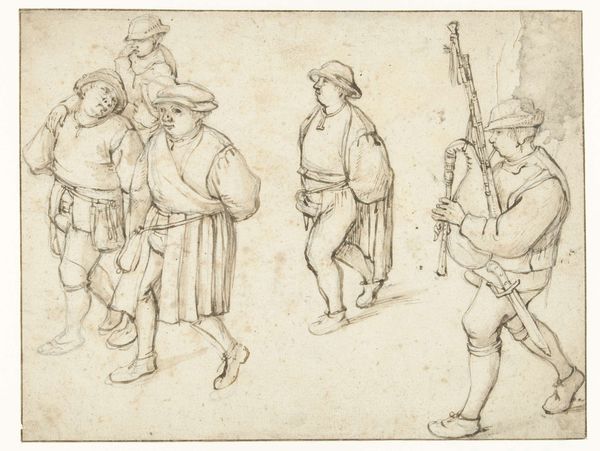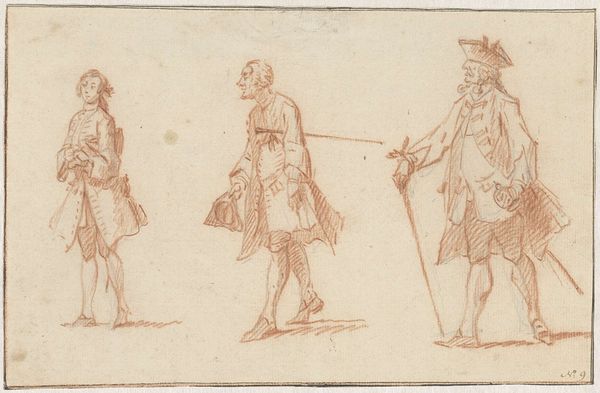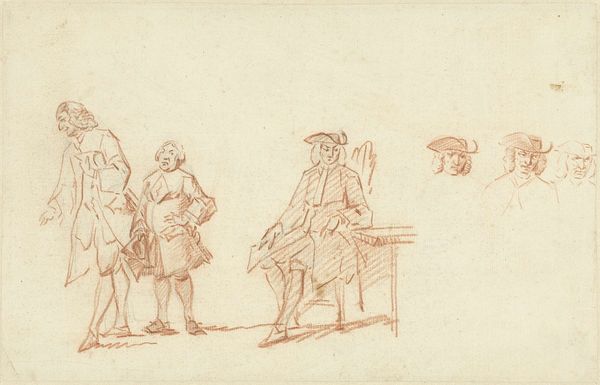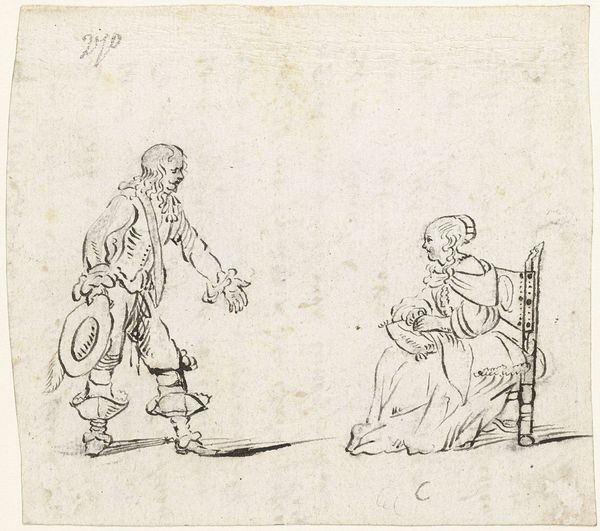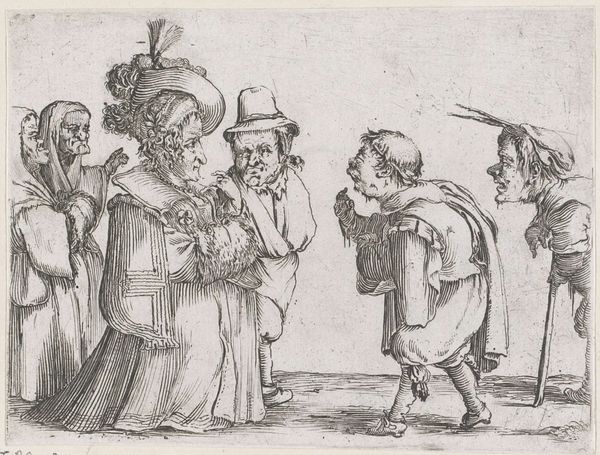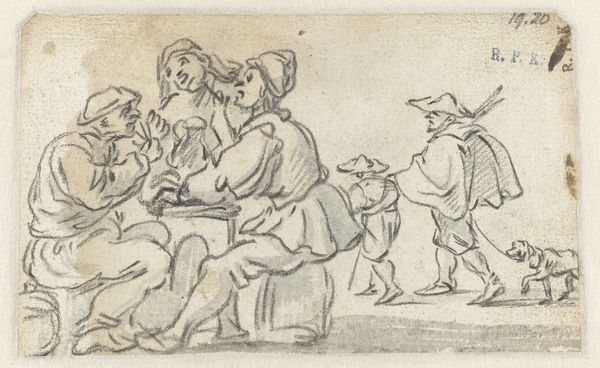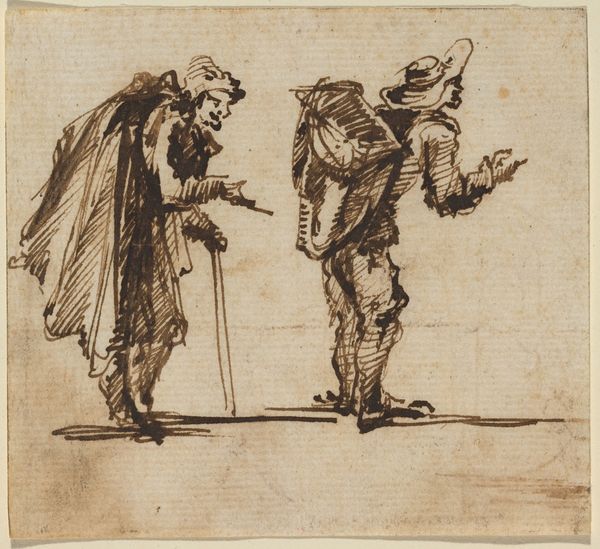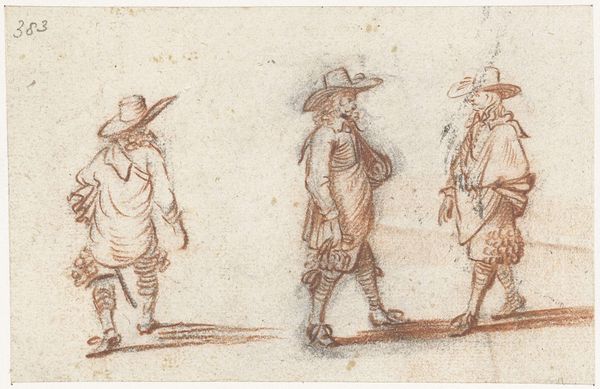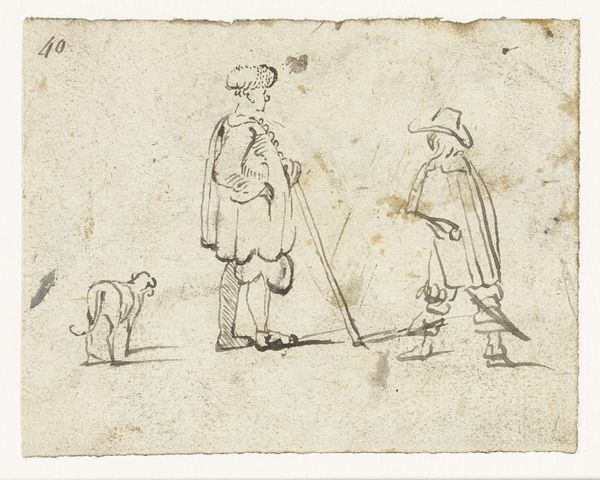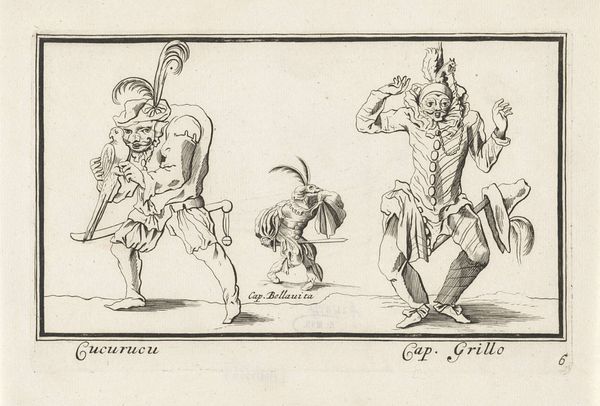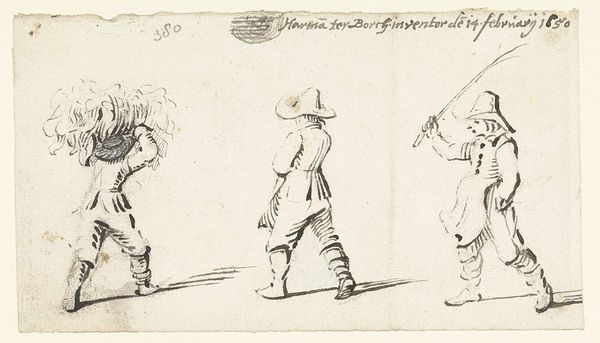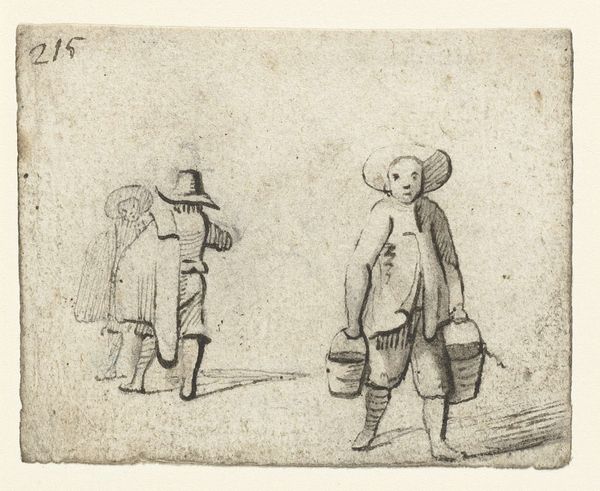
drawing, paper, ink
#
drawing
#
dutch-golden-age
#
figuration
#
paper
#
ink
#
genre-painting
Dimensions: height 75 mm, width 140 mm
Copyright: Rijks Museum: Open Domain
Editor: Here we have Jan van Goyen’s "Four Peasants", created sometime between 1606 and 1656, rendered in ink on paper. The sketchiness of the lines almost gives the figures a sense of caricature, a slightly mocking air, what do you make of this portrayal of the common folk? Curator: The ink here isn't just a medium; it’s a revealer of a certain archetype that carries significant cultural memory. Note how each figure is distinguished by subtle yet definite markers. What repeated elements do you observe about how they're depicted? Editor: They all have hats, they all seem to carry a tool and their clothes are baggy. I don’t understand what all this represents… Curator: These visual elements locate them within a specific social context. The hats, the tools, the simple clothing—they’re all signifiers of a rural, working-class identity. In 17th-century Dutch art, images of peasants served complex social and ideological functions. Consider how this era grappled with ideas of national identity, prosperity, and morality, then consider how these peasants are represented. Are they idealized? Vilified? Editor: Hmm, neither, actually. They appear pretty neutral, like they're captured candidly, without romanticizing their labor or making fun of their way of life. Curator: Precisely! This approach avoids moralizing judgment, presenting them instead as simple representations of labor and everyday life. The symbolism lies not just in the individual figures, but also in how they are grouped together. What collective message does that send? Editor: Maybe that they’re ordinary and meant to show how they spent their time on their farmlands? Is that van Goyen’s point, or am I projecting? Curator: It highlights the quiet dignity of their existence. Looking at it from that view, it offers an intriguing insight into the values of the emerging Dutch Republic, a time where representations of common life gained increasing currency. The choice of ink and paper contributes further to this effect. What associations does drawing have that other media don't? Editor: I suppose the ink creates immediacy, but it may also give it some weight, a symbolic impact and meaning for the generations. It feels very intimate and revealing.
Comments
No comments
Be the first to comment and join the conversation on the ultimate creative platform.
